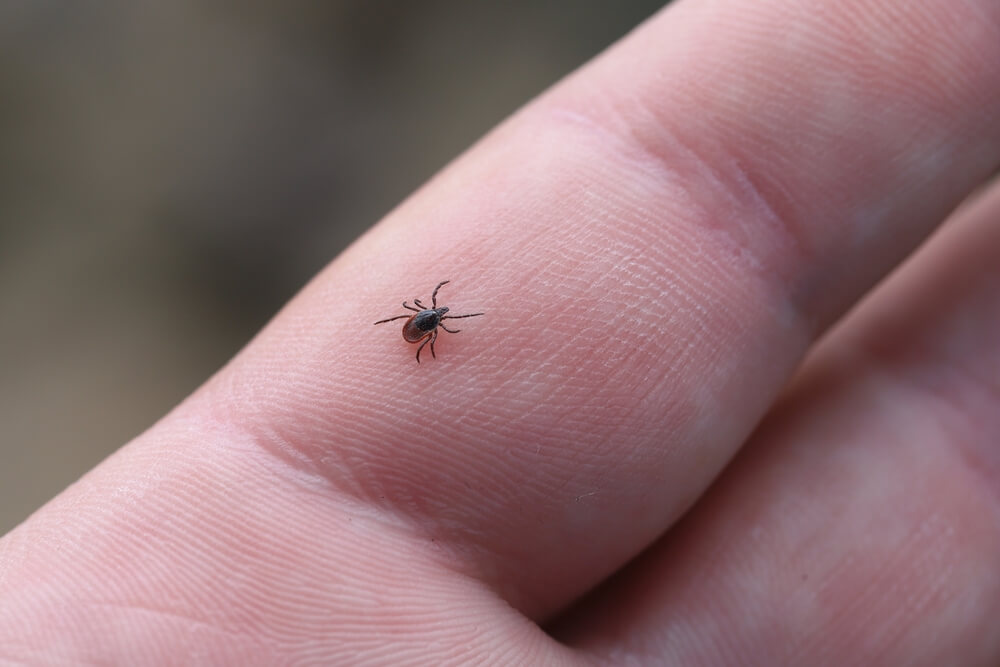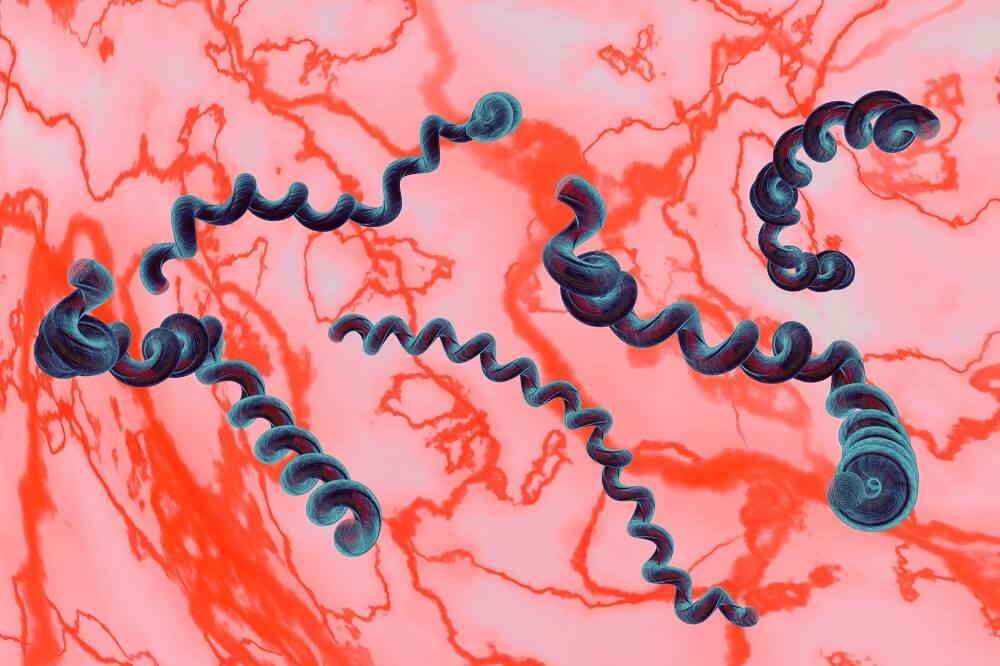
Understanding Lyme Disease: Symptoms, Stages, Testing Challenges, and a New Path to Recovery


Lyme disease is the most common tick-borne illness in the United States. The Centers for Disease Control and Prevention (CDC) receives as many as 89,000 official reports of Lyme disease annually from state health departments and the District of Columbia. However, this number is minuscule compared to what experts believe is the true number of cases per year. The CDC reports that recent estimates suggest that approximately 476,000 individuals develop Lyme disease each year in the U.S. Yet, understanding Lyme disease is still a challenge for both patients and the scientific community at large.
What is Lyme Disease?

Lyme disease is a relatively modern affliction. It was only first identified in the U.S. in 1975, in the city of Lyme, Connecticut. Over the past five decades, scientists have conducted numerous studies to better understand Lyme disease, its transmission, and its impact on the human body.
Understanding How Lyme Disease is Transmitted
Lyme is spread mostly by deer ticks, primarily found in the Northeast, upper Midwest, and Northwestern United States, although Lyme cases have been reported in every state. Deer ticks are also known as black-legged ticks, Ixodes scapularis, or Ixodes pacificus. Some are as tiny as a poppy seed; these ticks are very small, making them troublesome to see. Lyme is also common to Europe, although a different breed of tick is the culprit overseas.
Ticks carry the Lyme disease bacterium, Borrelia burgdorferi, which is a spirochete — a highly invasive bacterium because of its shape and motility mechanisms. Bacteria quickly move through the skin and break into and out of blood vessels. Spirochete bacteria can even cross the blood-brain barrier.
Unfortunately, in the case of Lyme disease, the bacteria are difficult to kill, especially if left untreated in the very early stages of the infection.
Lyme Disease Symptoms by Stage

There are three main stages of Lyme disease, each with its own signs and symptoms:
1. Acute Early Lyme Disease: Recognizing the First Signs
Only about 25-30% of Americans diagnosed with Lyme disease recall being bitten by a tick, making early attention to symptoms vital for a timely diagnosis. A rash known as erythema migrans (EM) is often the first sign of a Lyme disease infection. The rash expands over time and can reach 12 inches or more across. It may feel warm to the touch, but it is rarely painful or itchy. Sometimes, the rash clears in the middle and resembles a bullseye.
However, not everyone who is infected exhibits this bullseye indication. Other early indications of early-stage Lyme resemble the flu: Fever, chills, joint and muscle pain, headache, or a stiff neck.
Timing is crucial in this acute stage of infection. If a person can identify a tick bite, they should clean the site right away with antibacterial soap and notify their primary care provider. In that case, they may be able to cure the infection in 10-12 days, typically with antibiotics.
2. Early Disseminated Lyme Disease: When Infection Spreads
Lyme progresses to the subacute stage, known as early disseminated Lyme disease, when an infection spreads to the body. These more severe symptoms may begin weeks or even months after the initial infection. According to the Global Lyme Alliance, these symptoms can include flu-like symptoms as well as:
- pain, weakness, or numbness in the arms or legs
- Changes in vision
- Fatigue
- Heart problems, such as palpitations, chest pain, or Lyme carditis
- facial paralysis (Bell’s palsy)
3. Late Disseminated Lyme Disease (Chronic Lyme or Post-treatment Lyme Disease Syndrome)
Sometimes, Lyme disease symptoms persist long beyond antibiotic treatment. Although the medical community disagrees on a naming convention for this stage, it is typically called Chronic Lyme or Post-treatment Lyme Disease Syndrome. These terms are used for individuals still experiencing symptoms more than six months after an infection, even when antibodies cannot be detected. Understanding Lyme disease in this late chronic phase has proven to be most challenging for the scientific community.
In addition to the symptoms listed above, those suffering from Lyme in the late disseminated phase may also experience:
- Cognitive dysfunction (brain fog, concentration and memory issues)
- Arthritis in large joints or near the initial tick bite location
- Severe headaches or migraines
- Vertigo or dizziness
- Migrating pains that come and go in joints or tendons
- Chronic fatigue syndrome
- Insomnia or sleep disturbances
- numbness in the arms, legs, hands, or feet
Some individuals even report having an “out of body” experience, feeling they are in one place when they’re not, similar to a hallucination.

Because Lyme disease and syphilis are both caused by spirochete bacteria, they can share many symptoms. Scientists have been able to draw from the lengthy history of syphilis symptomatology, which has documentation going back to the 15th century.
Challenges in Lyme Disease Diagnosis
Understanding Chronic Lyme is difficult because no definitive diagnostic test exists. Most Lyme disease tests are designed to detect antibodies made by the body in response to infection. But antibodies can take several weeks to develop, so patients may test negative if infected only recently.
Specific immunological markers may reveal concern via blood labs, but these markers also might indicate other types of infections — including some tick-borne diseases, viral, bacterial, or autoimmune diseases — which can result in false positive test results. By some estimates, more than half of positive Lyme test results are false positives.
The most effective way to uncover Lyme is through a solid, thorough history, clinical examination, and a Lyme questionnaire.
Understanding Why Lyme Disease Can Persist after Antibiotics
Traditional treatment for Lyme disease includes antibiotic, antiviral, and antifungal protocols. The problem is that spirochetes are often able to survive by quickly adapting to these treatments. Many bacteria contain plasmids, which are small, circular DNA molecules that can make bacteria resistant to antibiotic treatment. With Lyme, this process becomes heightened. Research has shown that the Lyme disease Borrelia burgdorferi species presents the most complex plasmid structure among known bacteria.
Spirochetes are so smart and fast that they communicate with other spirochetes, telling them to change various factors such as pH or temperature, or generate a new plasmid that will ultimately resist the treatment.
Risks of Prolonged Antibiotic Treatment
When one antibiotic treatment doesn’t work, physicians may try another and another. But this perpetuates the resistance and induces long-lasting molecular changes to the body’s microbiome. Not only has long-term antibiotic treatment for Lyme disease shown to produce positive outcomes, it has also been associated with serious, sometimes deadly complications.
Despite all these efforts, the spirochetes survive. Autopsy evidence reveals that spirochetes can keep growing persistently, even 15 years after infection. Given all the evidence, antibiotics do not always work effectively to eliminate the infection, particulary in the chronic phase.
Exploring New Hope: Hyperbaric Oxygen Therapy for Lyme Disease

Multiple research studies have shown the positive benefits of hyperbaric oxygen therapy (HBOT) in treating Lyme disease and its symptoms. The science behind this approach involves how spirochetes respond when exposed to oxygen: they die. Because the Borrelia burgdorferi has anaerobic properties, it cannot survive in a high oxygen environment. Because HBOT can raise oxygen levels in the blood and tissues up to 15-20% times normal levels, researchers propose that HBOT creates an inhospitable environment for Lyme in the body.
Additionally, peer-reviewed, published scientific studies reveal that a specific HBOT protocol can alleviate some of the most troubling symptoms of post-treatment Lyme disease syndrome, including fatigue, cognitive dysfunction, inflammation, and chronic pain.
Healing from Chronic Lyme Disease – Watch Lyndi’s Story
Is Chronic Lyme the Root of Your Symptoms?
Understanding Lyme disease is an ongoing challenge in the medical community. However, many individuals living with chronic Lyme disease who have completed this specialized protocol as part of the Aviv Medical Program have been able to return to the active lifestyle they have missed for ten-plus years. Learn more about how the Aviv Medical Program can help.
If you or a loved one suspects chronic Lyme disease is at the root of symptoms, contact us to learn more about the Aviv Medical Program and its role in providing relief.
Last Update: July 16, 2025



